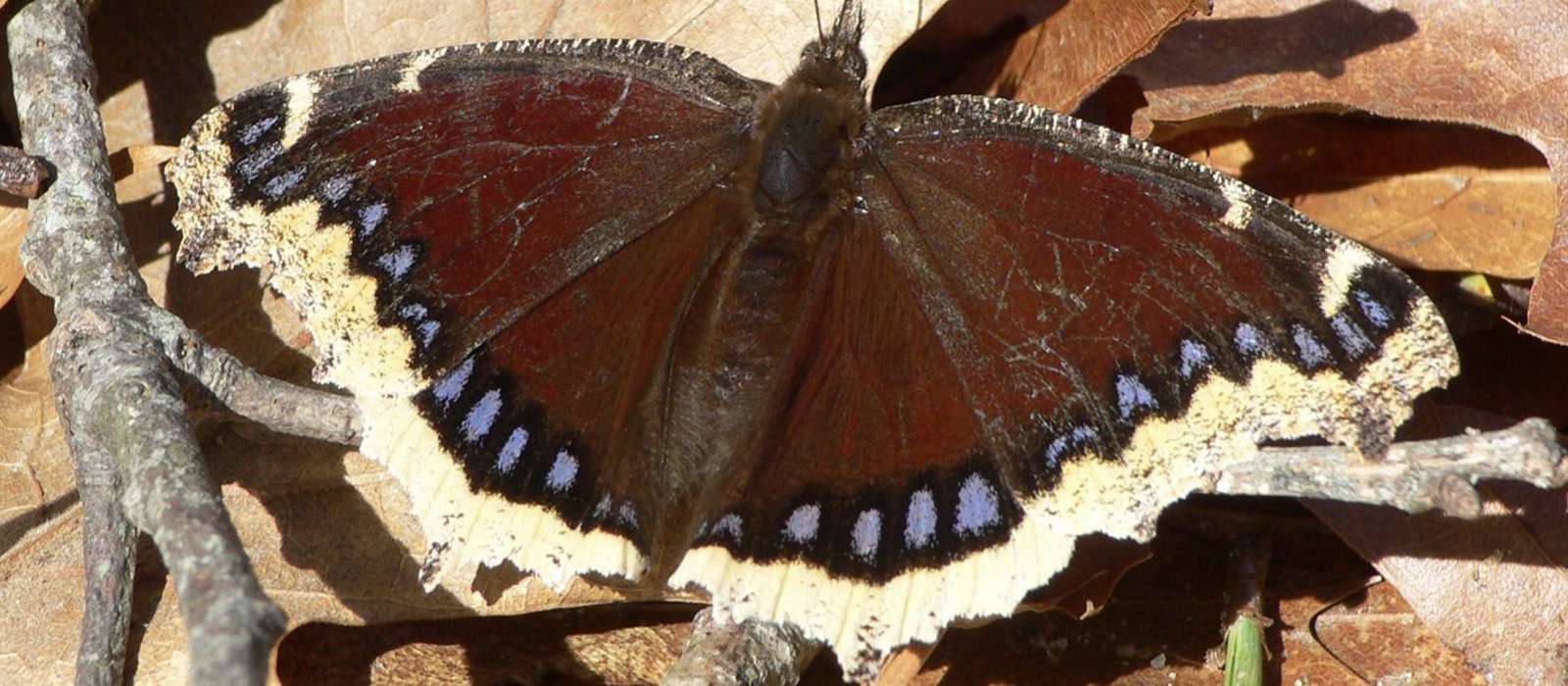With mild weather finally forecast for this week, odds are good that the year’s earliest butterflies will be on the wing. Invariably, the mourning cloak is the first butterfly species reported on the Vineyard each year, with the first records generally coming in the first half of March. In mild seasons, this insect can be found in February, and there is at least one January (!) record for the Island. A sunny day with temperatures in the mid-50s will generally suffice to get this species into the air.
The mourning cloak is among our most easily recognized butterflies. A fairly large species, with a wing span of about three inches, the mourning cloak is mostly dark brown above and below. But both wing surfaces are edged with a distinct yellow border. On the top or dorsal surface of the wing, a row of electric blue spots lies inside the yellow border — a beautiful detail if you can see it. With its wings folded up above its back, a mourning cloak shows its subtly mottled underwing; in this posture, the butterfly is well camouflaged, resembling a leaf. Indeed, even in flight this butterfly can look leaf-like; I often detect my first ones of the season because a leaf-like object is flying upwind instead of downwind!
Unusually among our butterflies, the mourning cloak routinely survives the winter in adult form, hiding in sheltered sites such as woodpiles or behind flakes of bark on tree trunks. It is this trait that accounts for this butterfly’s early appearance: overwintering individuals are ready to go, with no further development needed, as soon as the weather begins to warm.
Once awakened, mourning cloaks tend to be territorial, basking in the same favored, sunny location for several days in a row and flying up to chase away or court with other members of its species that appear. Males and females will mate later in the spring, when warmer weather has settled in, and the females will lay eggs on willow shrubs, the leaves of which serve as food for mourning cloak caterpillars. The new generation pupates and then emerges as adults in July or August, eventually seeking shelter for the winter as the weather cools in late autumn. So the mourning cloak that you see on a mild March day has been alive, as an egg, a caterpillar, a pupa, or an adult, for almost a full year.
Look for mourning cloaks in clearings in mature woodland, or along woodland roads and trails where sunlight filters to the ground. The species is fairly common on the Vineyard, so nearly any piece of oak or pitch pine habitat can host it. Once you’ve found one, wait for it to land and begin basking, spread-winged, in the sun. When the butterfly is calm and comfortable, you’ll find that a slow, careful approach will often let you get close enough for a good look or a photograph. If you find one of these elegant insects in the coming days and weeks, please let us know where and when by commenting on this post. And if you’re an iNaturalist user, please remember to enter your sighting there as well.
Matt Pelikan is the director of the Martha’s Vineyard Atlas of Life project at BiodiversityWorks. His interest in butterflies dates back to the early 1990s.

